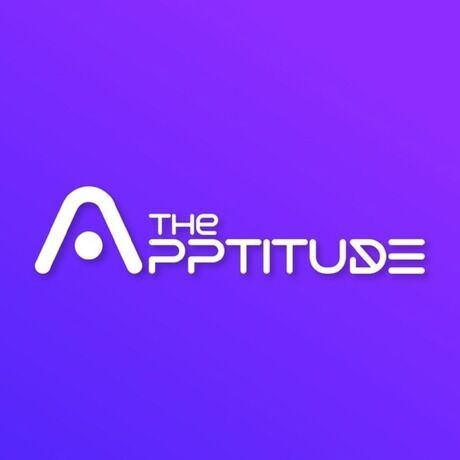The food delivery industry has grown exponentially over the past few years, driven by evolving consumer habits, mobile technology, and the convenience of on-demand services. For entrepreneurs and businesses looking to enter this booming market, investing in a high-quality food delivery app has become essential. But one of the most common questions that arise is: how much do professional food delivery app developers charge in 2025?
In this comprehensive guide, we’ll break down the costs involved, factors that influence pricing, and what businesses can expect when hiring expert food delivery app developers.
Why Hiring Professional Food Delivery App Developers Is Worth the Investment
Creating a food delivery app is more than just coding. It requires understanding the market, designing an intuitive user experience, ensuring seamless functionality, and integrating secure payment and logistics systems.
Professional food delivery app developers bring expertise in areas such as:
-
UI/UX Design: Crafting interfaces that are easy to navigate and visually appealing.
-
Backend Development: Building scalable and secure databases to handle large volumes of orders.
-
Payment Gateway Integration: Ensuring secure, multi-currency transactions.
-
Real-Time Tracking: Integrating GPS and push notifications for a better customer experience.
-
Third-Party API Integration: Connecting apps with restaurant POS systems, review platforms, and analytics tools.
By hiring skilled developers, businesses can reduce errors, launch faster, and provide an app experience that meets modern customer expectations.
Factors That Influence the Cost of Food Delivery Apps
The price of developing a food delivery app in 2025 can vary widely based on several key factors:
1. Platform Choice
-
iOS vs. Android: Developing for both platforms increases costs compared to a single-platform app.
-
Cross-Platform Solutions: Technologies like Flutter and React Native can reduce costs by allowing a single codebase for both platforms.
2. App Complexity
-
Basic App: Simple features like user registration, menu display, and order placement.
-
Advanced App: Features like real-time tracking, AI-based recommendations, loyalty programs, and multi-vendor support.
3. Design & UI/UX
A highly polished, user-friendly interface requires time and creativity. Developers often charge more for custom designs compared to pre-built templates.
4. Integration Requirements
Connecting your app to payment gateways, third-party APIs, and delivery tracking services can increase development costs.
5. Location of the Development Team
-
North America & Europe: $100–$250 per hour
-
Asia & Eastern Europe: $30–$80 per hour
-
Freelancers: $20–$100 per hour depending on expertise
6. Maintenance and Support
Post-launch support, updates, and bug fixes are ongoing costs often overlooked. Professional developers typically offer monthly or yearly support packages.
Average Cost Breakdown of Food Delivery Apps in 2025
Let’s look at a realistic estimate for building a professional food delivery app:
| Feature / Component | Estimated Cost (USD) |
|---|---|
| UI/UX Design | $5,000 – $15,000 |
| Frontend Development | $10,000 – $30,000 |
| Backend Development | $15,000 – $40,000 |
| API & Third-Party Integration | $5,000 – $15,000 |
| Payment Gateway Integration | $3,000 – $10,000 |
| Real-Time Tracking & Notifications | $5,000 – $12,000 |
| Testing & Quality Assurance | $5,000 – $12,000 |
| Deployment & Launch | $1,000 – $3,000 |
| Total Estimated Cost | $49,000 – $137,000 |
Note: Costs vary depending on app complexity, the reputation of the development team, and the location of developers.
Additional Costs to Consider
-
Marketing and App Promotion
Launching an app is not enough; you need marketing strategies like social media campaigns, app store optimization, and influencer partnerships to attract users. -
Server and Cloud Hosting
Depending on user volume, cloud services like AWS, Google Cloud, or Azure may add $100–$1,000 monthly. -
Maintenance and Updates
Regular updates, bug fixes, and new features are critical for keeping your app competitive. Most developers charge 15–20% of the initial development cost annually for maintenance. -
Legal and Compliance Fees
Apps handling food delivery must comply with data protection laws and food safety regulations. Costs can vary depending on region.
How to Choose the Right Food Delivery App Developers
Selecting the right development partner is as important as understanding costs. Here are some tips:
1. Check Their Portfolio
Experienced developers should have prior projects in food delivery or on-demand services. Look for apps with high ratings, positive reviews, and smooth performance.
2. Assess Technical Expertise
Ensure the team is skilled in relevant programming languages, cross-platform development tools, and modern backend technologies.
3. Communication and Transparency
Regular updates, clear timelines, and open communication channels are essential for project success.
4. Understand Pricing Structure
Ask for a detailed quote that breaks down costs by design, development, testing, and support. Avoid vague estimates.
5. Post-Launch Support
Check if the developers offer support for app updates, security patches, and troubleshooting after launch.
Cost-Saving Tips Without Compromising Quality
-
Start with MVP (Minimum Viable Product)
Focus on core features first. Launching an MVP allows you to test market response before investing in advanced functionalities. -
Use Cross-Platform Development
Flutter or React Native apps reduce development time and cost while covering both iOS and Android. -
Outsource Strategically
Hiring developers from regions with lower hourly rates can reduce costs without compromising quality. -
Leverage Pre-Built Modules
Certain features like payment gateways, order management, or push notifications can use pre-built modules to save development hours.
Trends in Food Delivery App Development in 2025
Understanding current trends can help businesses plan features and budget effectively. Some key trends include:
-
AI & Machine Learning: Personalized recommendations, predictive delivery times, and demand forecasting.
-
Voice Ordering: Integration with voice assistants for hands-free ordering.
-
Hyperlocal Delivery: Optimized delivery routes and neighborhood-based offerings.
-
Sustainability Features: Options for eco-friendly packaging and carbon footprint tracking.
-
Subscription Models: Offering monthly plans for frequent users to increase retention.
Professional food delivery app developers are adapting to these trends, ensuring apps remain competitive in the evolving market.
Final Thoughts
The cost of hiring food delivery app developers in 2025 can range from $49,000 to $137,000 or more, depending on app complexity, features, and the expertise of the development team. While it may seem like a significant investment, the benefits of partnering with experienced professionals outweigh the risks of poor app performance, negative user experiences, or delayed launches.
By carefully evaluating developers, understanding cost drivers, and planning strategically, businesses can build a successful food delivery platform that attracts customers, generates revenue, and stands out in a competitive market.
Remember, the right developers not only code your app but also provide insights, scalability, and long-term support to help your business thrive. Investing in professional food delivery app developers is investing in the future of your on-demand service.
FAQs
Q1: How long does it take for professional food delivery app developers to build an app?
A1: Development typically takes 4–6 months for a standard app. Complex apps with advanced features may take 8–12 months.
Q2: Can I reduce costs by hiring freelance developers instead of a development company?
A2: Yes, but it may involve higher risks in project management, quality assurance, and timely delivery.
Q3: Is cross-platform development cheaper than native development?
A3: Yes, cross-platform solutions like Flutter or React Native can save 30–40% of costs while covering both iOS and Android.
Q4: Are post-launch maintenance costs significant?
A4: Yes, maintaining and updating the app can cost 15–20% of the initial development cost annually.
Q5: What features should I prioritize in my food delivery app?
A5: User-friendly UI, easy navigation, secure payments, real-time tracking, and reliable notifications are essential for a successful app.







0 Comments